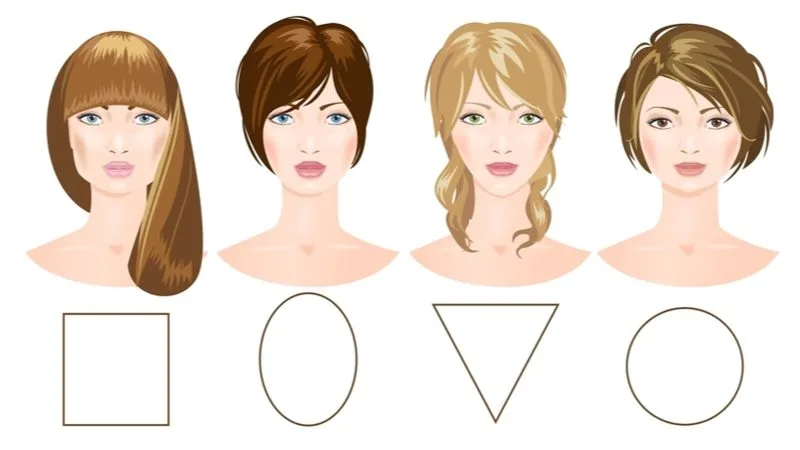Jump to:
There are far more types of bangs than most people know about. But don’t worry — we’re hair experts and have rounded up the 13 most popular variations to help give your hair a refresher. Read on to learn more.
Wait, There Are Multiple Types of Bangs?
Stop me if you’ve heard this one before: Your layers are grown out, your once-cute bangs now hang lifelessly around your face, and you are THIS.CLOSE. to making a huge hair change just to shake things up a bit.
Maybe you’d look good with blunt bangs? A pixie cut? A drastically different hair color?
Been there, done that. About a million times. When you’re feeling absolutely sick of your hair, it doesn’t take a major change to transform your locks. If you’re tired of your current hairstyle and are ready to try something different to change it up, bangs are the safest bet.
But – and here’s the frustrating part – bangs are not a one size fits all deal. Certain types of bangs accentuate your jawline, while others draw attention to your eyes and cheekbones.
Some are great for covering up features you’d rather downplay, like forehead lines, and some are best for thick or fine, thin hair.
That’s why the Brigitte Bardot bangs your friend is flawlessly rocking ended up looking kind of wonky on you. It’s why those bold and precise blunt bangs made your face look chubby although you see tons of celebs sport them without the same effect.
And it’s why knowing the different types of bangs is the key to nailing a hairstyle that is flattering, enhances your best features, and gives your look a breath of fresh air.
You can’t choose the best bangs to suit your face shape and hair type if you’re not aware of all the options! Below, you’re going to see just how varied and versatile bangs can be.
In a nutshell, these include:
- Blunt Cut Full Fringe Bangs
- Swooped Side Bangs
- Side-Swept Bangs
- Wispy Full Fringe Bangs
- Curtain Bangs
- Split Bangs
- Korean Air Bangs
- Face-Framing Fringe Bangs
- Long Bangs
- Shaggy Bangs
- Arched Crescent Bangs
- Micro Bangs
- Curly Bangs
We’ll show you examples of the different types of bangs so you can get familiar with your options and choose the one that’ll be the most flattering for you. Then, we’ll cover some of the most common questions about bangs and how to choose the type that will suit you best.
13 Types of Bangs to Refresh Your Look
Bangs can really make or break your hairstyle. Good bangs will transform your look by making a noticeable difference, accentuating your best features, downplaying signs of aging, and incorporating trendy styles that will make you look more fashionable than ever.
Check out the 13 types of bangs you can choose from to refresh and rejuvenate your look!
1. Blunt Cut Full Fringe
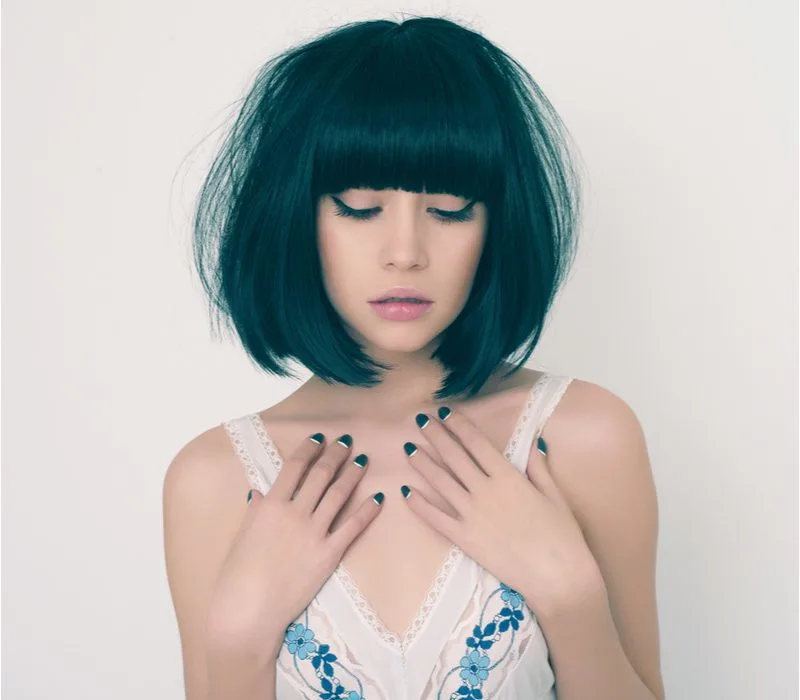
George Mayer/Shutterstock
Scientists say the universe began with a big bang, so we will, too. A blunt cut full fringe is a heavy, straight-across bang that covers the forehead and typically ends around the eyebrows – either slightly above, right at the brow, or just below.
Blunt bangs make a bold statement and typical haircut pairings include blunt bobs that mirror the bangs’ shape or long, layered cuts that contrast with the precise line the bangs create.
They are a commitment and it may take a while for them to grow out to the point where they can be styled differently. This type of bang is best for oval faces, but heart and square faces can rock similar bangs with this shape.
Round faces may look wider with blunt bangs obscuring the forehead, but if you have them point cut and ask for a wispier, less heavy version, they can work on this face shape.
2. Swooped Side Bangs
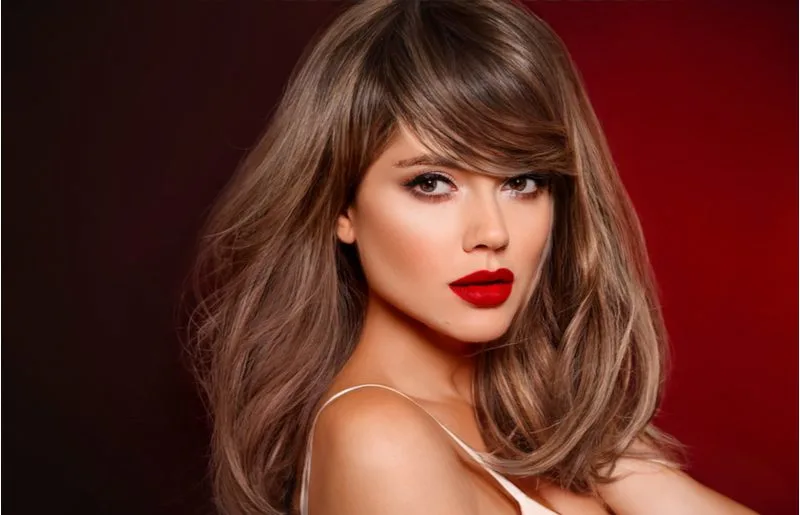
VAndreas/Shutterstock
Swooped side bangs are cut at a soft angle to create a rounded bang that appears to swoop across the forehead. The way swooped side bangs are cut is important, but styling is a major factor in perfectly nailing that rounded shape.
Swooped side bangs require commitment because it takes a while for them to grow out. You can always turn grown-out swooped bangs into trendy curtain bangs or split bangs if you get tired of the look, though.
This type of bang is best for round faces because they visually shrink the width of the cheek area, making it appear leaner and less round. The angle of side bangs is also helpful for round faces as it creates the illusion of a longer (read: more oval) face.
Read Next: What Haircut Should I Get (Women)?
3. Side-Swept Bangs
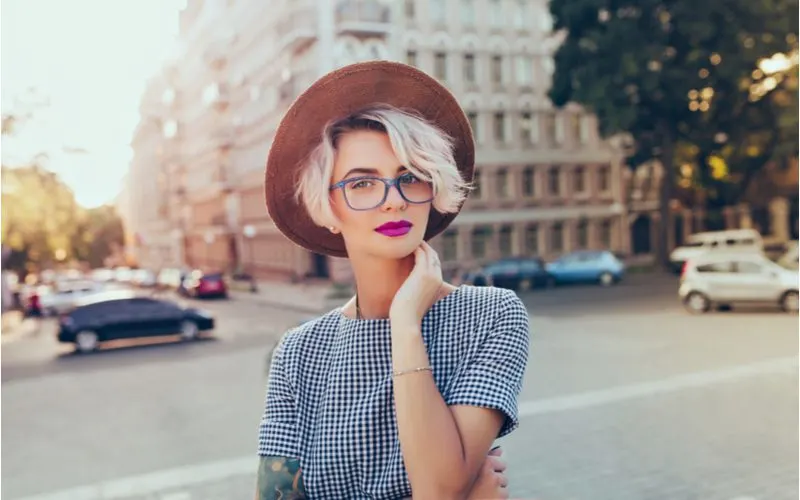
Sun Shock/Shutterstock
If full swooping side bangs aren’t your thing, you might consider the softer side-swept bangs. These bangs aren’t shaped or rounded as much as their swooping counterparts and better blend into the sides of your hairstyle.
With side-swept bangs, the goal isn’t forehead coverage or creating that rounded edge. Instead, side-swept bangs just follow the general downward angle from a side part to the side of your face. Light layering in the bangs can help them seamlessly blend into the rest of your hair for a cohesive style.
This makes side-swept bangs a very popular choice for women with all face shapes and hair types. It’s truly a universally flattering option that works for oval, round, square, and heart face shapes.
4. Wispy Full Fringe
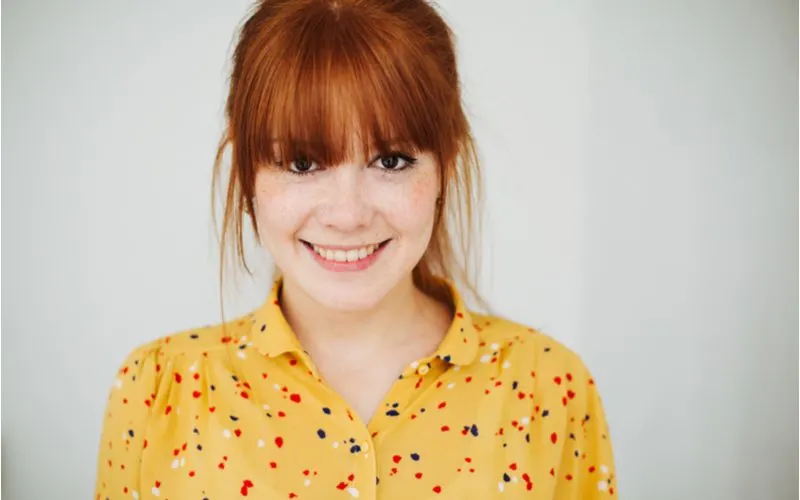
Schuchrat Kurbanov/Shutterstock
“Full fringe” usually conjures up an image of heavy blunt bangs that completely cover the forehead. But a wispy full fringe is a whole ‘nother ball game! These full bangs, like blunt bangs, extend across the forehead and end around the eyebrows – either just above, at, or below.
But the key difference is the wispy, fine texture. A wispy full fringe is cut with a thinner layer of hair so the bangs aren’t quite as heavy and thick as their blunt counterparts.
Wispy bangs are usually point cut (snipped into the ends with the scissors pointing up) to create a slightly uneven, casual texture that encourages the bangs to create that lovely piece-y texture. This type of bang works for all face shapes.
But square and heart faces get the most benefit from it. Since the bang texture is light and wispy, these bangs help soften up strong lines and angles in square faces.
For heart faces, wispy bangs provide peeks of the forehead (the widest part of a heart face) while minimizing the width and playing up the shape of your feminine jawline and chin.
5. Curtain Bangs
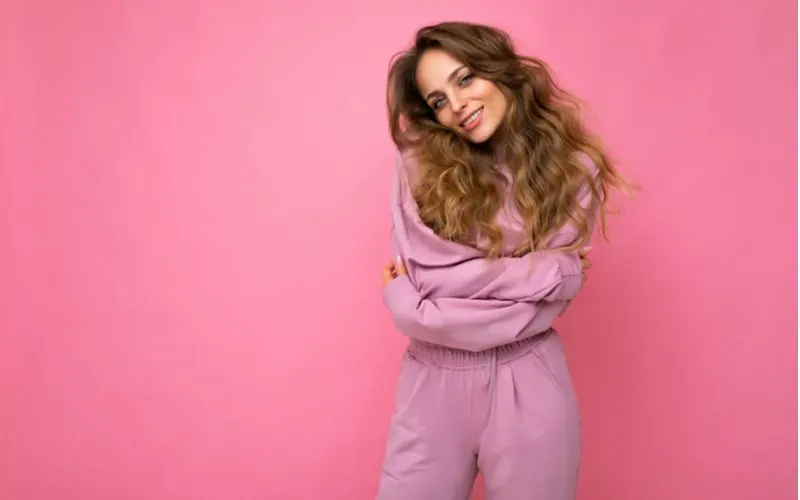
Desizned/Shutterstock
Curtain bangs have earned a huge following as of late because they are so attractive on all face shapes and hair types. These casual, retro-inspired bangs typically hit the face around the eyebrow or cheekbone level and curve outward.
The effect of curtain bangs is similar to the feathered styles of the 70s with out-turned curls around the face. Curtain bangs can vary enormously in length, style pattern, and shape.
That’s part of what makes them so appealing – you can literally customize your curtain bangs to be the best fit for you. If you prefer longer bangs, have your curtain bangs end around the jawline.
If you like the wolf cut look, opt for shorter bangs that hit around your cheekbones or as far up as your eyebrows. This type of bang works for all face shapes, but it’s helpful to consult with a skilled stylist to determine the perfect length and style pattern for yours.
6. Split Bangs
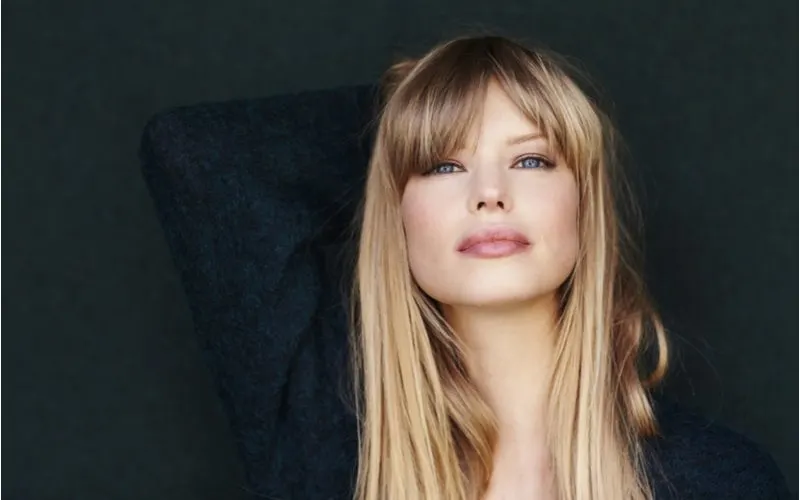
The Stock Company/Shutterstock
Brigitte Bardot, is that you? Split bangs, sometimes called French girl bangs, are one of the most popular styles right now. They are quite similar to curtain bangs but they are styled differently (always with an open split in the center or off-center) and are typically cut a bit shorter.
They have a loose A-shape and are usually a bit longer on the sides.
Split bangs usually hit somewhere around the eyebrows, whether it’s just above, right at, or just below them. As the name implies, these bangs are styled with an open split somewhere near the center.
We’re seeing a lot of women rocking French girl bangs with a slightly off-center split. This type of A-shaped bang can work for a variety of face shapes as long as you choose the proper length and part.
Oval faces can rock any length. Round faces should aim for split bangs that hit at the cheekbones to cover the widest point of the face. Heart and square faces should opt for wispy, thin split bangs.
7. Korean Air Bangs
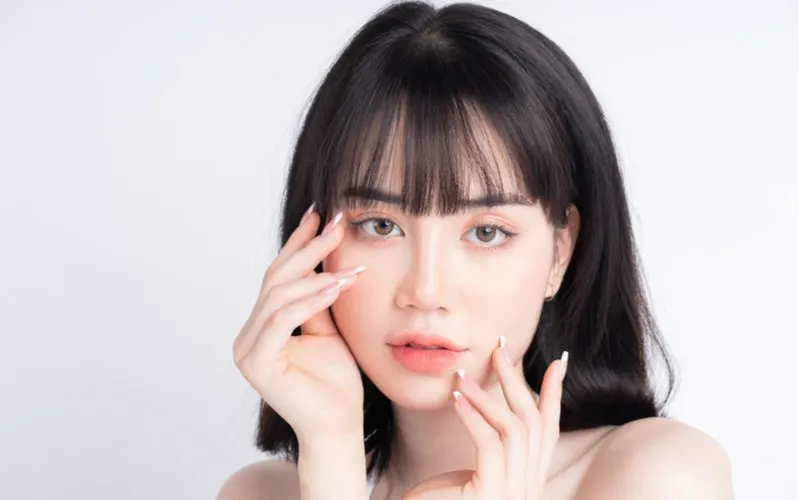
TimeImage Production/Shutterstock
Korean bangs, also called air bangs, are a newer trend and one of our favorite types of bangs. This ultra-fine, airy fringe will easily transform any haircut into something more ethereal and stylish.
Air bangs can be as short or as long as you want them, and a good stylist can help you determine exactly where yours should hit to flatter you the most.
While the length and manner you style them is up to you, two things should remain constant: The thin wispiness of the bang and the uneven, soft ends that should never look too blunt.
These soft, thin, and wispy bangs don’t have a lot of forehead coverage, making them a great option for round and heart face shapes. The softness and wispy, almost see-through pieces make them a great fit for square and oval faces, too.
8. Face-Framing Fringe
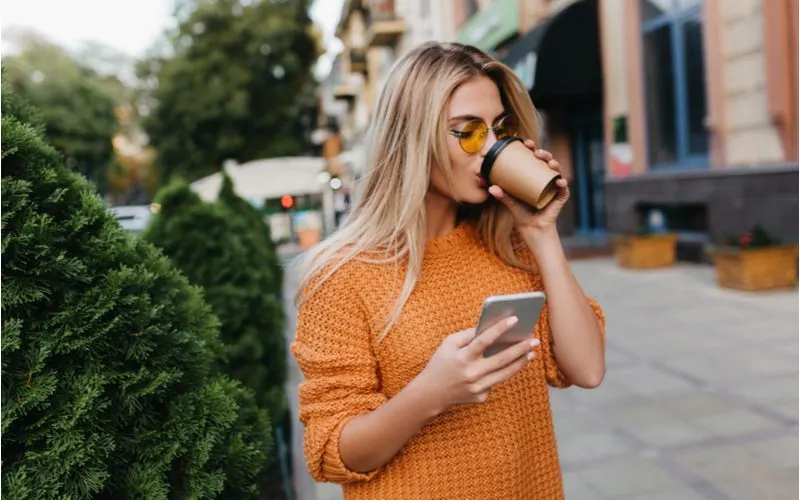
Sun Shock/Shutterstock
Women who’ve had ups and downs with bangs in the past are sometimes wary of getting bangs ever again. If you’re feeling finicky about the fringe, an in-between style like face-framing bangs are perfect.
Instead of strands cut short across your forehead, a face-framing fringe features long tendrils that hang beside the face and blend into the rest of your hair. This type of bang doesn’t require the same commitment as getting, say, blunt bangs.
And if you decide the bang life just isn’t for you, they can easily be worked into your hairstyle, tucked behind the ears, or clipped back.
A face-framing fringe is a great option for all face shapes. The length of the bangs and the way the pieces are cut has a lot to do with how it’ll look on a given face shape. Consult with a good stylist to determine what your best option for face-framing bang length and shape will be.
9. Long Bangs
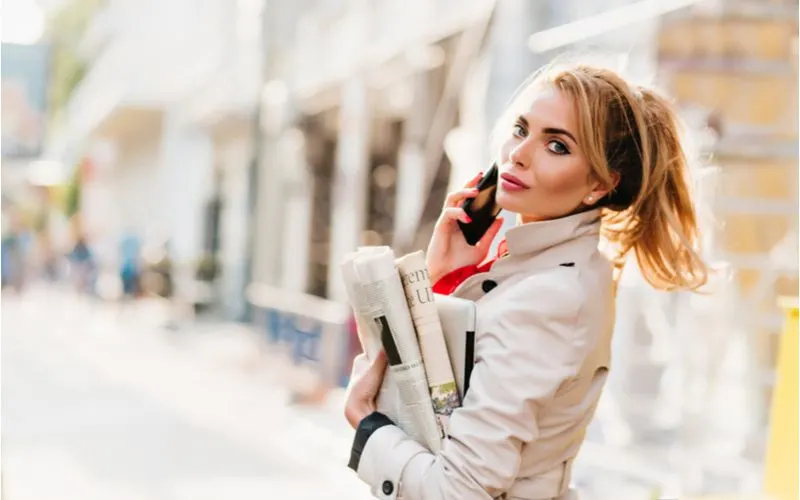
Look Studio/Shutterstock
Long bangs are very similar to curtain bangs, but they can be styled in any direction and don’t necessarily curve outward. Long bangs are a fantastic way to stylishly grow out bangs. Any bang that hits below the cheekbone could be considered a long bang.
Since long bangs can’t be worn straight down across the forehead, they’re often worn with a side part or middle part. Long bangs like this may be blended into the rest of the hair with short layers or left as a separate section.
It’s all up to you and the look you’re going for! This type of bang is best for round and square faces, which are both about as wide as they are long.
Since long bangs visually lengthen the face, ovals should steer clear of them to avoid taking on an elongated face shape. Heart faces benefit more from bangs that are slightly shorter and wispier to create softness.
10. Shaggy Bangs
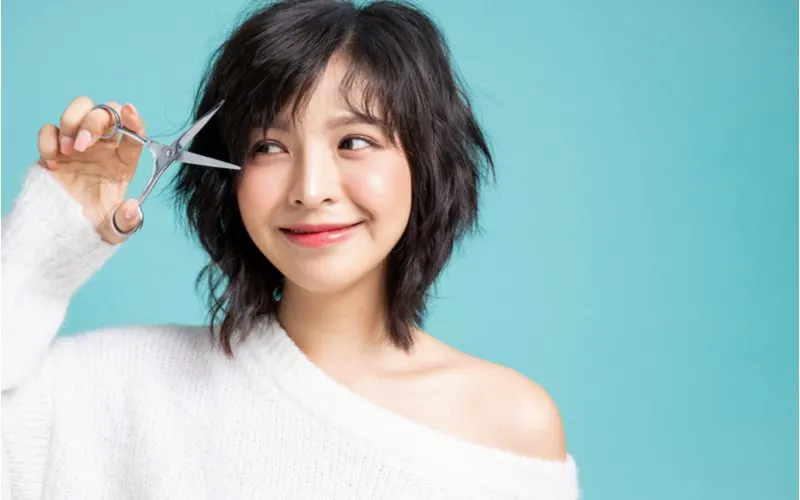
Pixpan_Creative/Shutterstock
The shag haircut in its many forms is super trendy right now. Shaggy bangs are a mainstay in many of the most popular hairstyles. The keys to shaggy bangs are lots of layering, an uneven, messy shape, and plenty of texture.
Shaggy bangs are a good choice for women with natural wavy, curly, or coily hair texture. Any kind of volumizing texture in the hair makes it easier to air-dry these bangs into a pleasant, tousled texture.
The amount of layering can make them a challenge to style for straight-haired ladies or those who struggle with frizz. Shaggy bangs work best on heavily layered and highly textured hairstyles like the wolf cut or a basic shag.
Since shaggy bangs create a lot of volume at the top and top sides of the head, they’re a great option for oval and square faces. Round faces risk looking wider while heart faces may look narrower or pointier at the chin with high-volume shaggy bangs.
Read Next: How to Get Rid of Frizzy Hair
11. Arched Crescent Bangs
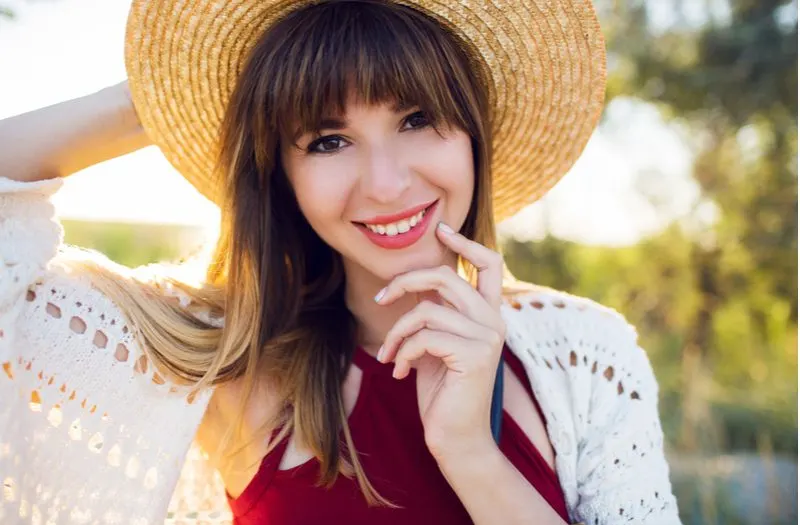
Svitlana Sokolova/Shutterstock
Arched bangs or crescent bangs are bangs that curve and create an arch shape over, at, or just below the eyebrows. They are similar to blunt bangs, but the shorter hair in the middle with longer hair at each end makes them different.
Arched bangs don’t look as severe as blunt bangs because of their gently sloped shape. They are great if you want to emphasize your eyes and open up your face.
You can easily tweak your arched bangs to make them as precise or wispy as you like. The arch in this type of bang makes it appropriate for all face shapes. The slope softens a square face and flatters an oval face shape.
The longer outer edges conceal the widest part of a round face to slim it. But heart shaped faces benefit the most from crescent bangs, which balance the face by slimming the top half and adding width to the narrow chin.
12. Micro Bangs
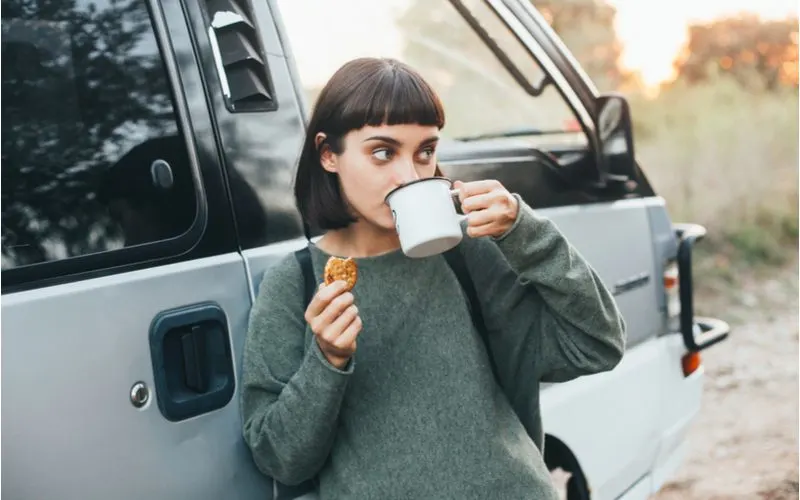
BublikHaus/Shutterstock
Micro bangs are super-short bangs that cover only the top of the forehead. They end above the eyebrows and can give you a gorgeous doe-eyed yet edgy look. Micro bangs were once on the fringe of bang styles (see what we did there?).
But they’ve become so popular in recent years that we’re seeing them a lot more often. Micro bangs aren’t meant to be blended into the rest of the hair.
They are a bold statement and their short length means they’ll always need to be worn down across the forehead. Depending on the length of your micro bangs, you may be able to sweep them over to the side or create a split in them for different looks.
Since micro bangs are so short, they’re definitely a commitment. It takes a long time to grow them out in a way that can be styled differently.
They are especially flattering on oval faces and any elongated face shape that is much longer than it is wide. Heart faces successfully rock this style, but round and square faces should opt for something longer and wispier.
13. Curly Bangs
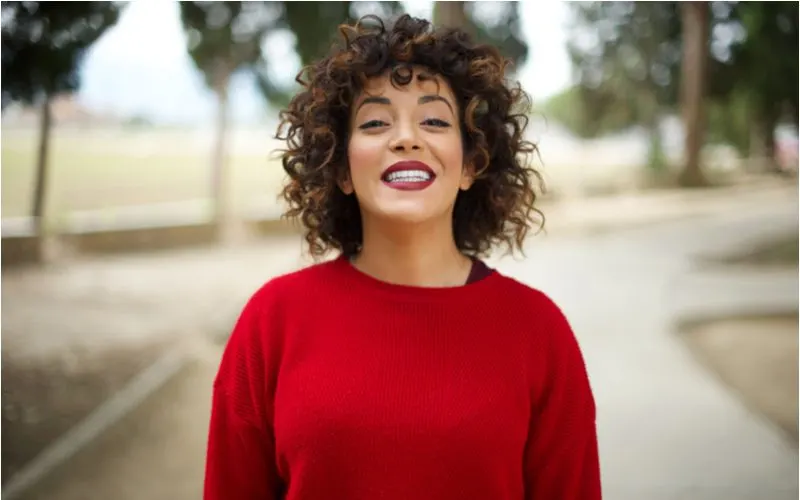
Roquillo Tebar/Shutterstock
Curly bangs aren’t really a type of bang, per se – it’s about the texture here. If you have curly hair and have ever worn bangs, you know that the final look is a lot different on bouncy ringlets than it is on straight or wavy hair.
Curly bangs can be any length and cut into almost any general bang shape (like a full fringe, curtain bangs, or side-swept), but two things should be on your mind as you decide. First is your curl type/pattern and second is the length you want them to be.
Since curly hair shrinks up a few inches as it dries, most curly bangs need to be cut while dry to avoid going too short. If you plan to rock bangs with a curly hair texture, check out your curl pattern and where the curl bends.
Your stylist can help you by determining where your bangs should be cut to avoid cutting off the curl pattern at an unflattering point, and they’ll understand that they need to be cut while dry to avoid the shrinkage issue.
Frequently Asked Questions
Still got a few questions about the different types of bangs? These are the most common questions we get about bangs and you might find your answers below!
What Are Your Favorite Types of Bangs?
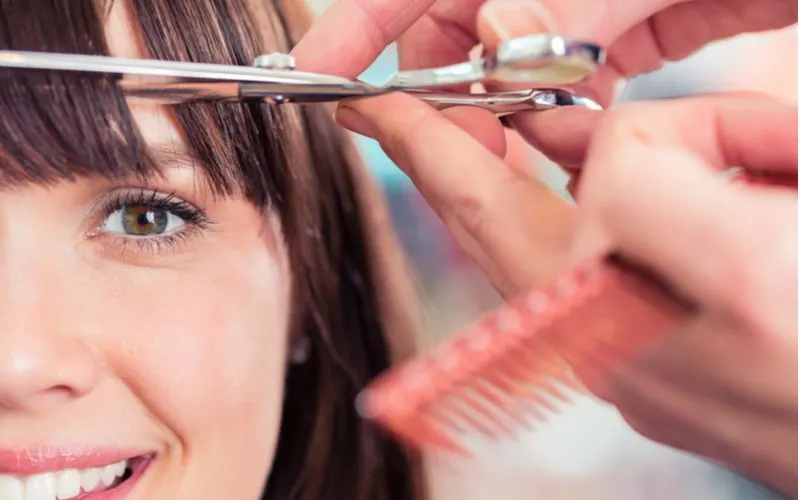
Kzenon/Shutterstock
We hope this answers some of the burning questions you had about bangs. Out of all the different types, what’s your favorite? Maybe you like a precise blunt bang that makes a bold statement with any hairstyle.
Or maybe you prefer a soft and wispy split bang, AKA French girl fringe, for its laissez faire feel and effortlessly cute style. Whatever your top choices for bangs are, make sure you keep your face shape, hair texture and type, and your facial features in mind when you make your final choice.
Not every bang style that you love is going to be a good fit for you. As long as you have a good stylist to consult and exchange ideas with, you’ll end up with a flattering fringe that will serve you well and instantly transform your look.

